Application and Comparison of Machine Learning Methods for Mud Shale Petrographic Identification
Abstract
1. Introduction
2. Methods and Materials
2.1. Materials
2.2. Methods
2.2.1. Supervised Learning Algorithm
- 1.
- BPANN algorithm
- 2.
- RF algorithm
- 3.
- GBDT algorithm
- 4.
- K Nearest Neighbor (KNN)
- 5.
- Support vector machine (SVM)
2.2.2. Unsupervised Learning Algorithm
- 6.
- K-means
- 7.
- DBSCAN
- 8.
- SOM
- 9.
- MRGC
3. Results
3.1. Division of Mud Shale Lithofacies Types
3.2. Analysis of Recognition Effect of Different Algorithms for Supervised Learning
3.2.1. BPANN Algorithm Recognition Effect
3.2.2. RF Algorithm Recognition Effect
3.2.3. GBDT Algorithm Recognition Effect
3.2.4. KNN Algorithm Recognition Effect
3.2.5. SVM Algorithm Recognition Effect
3.3. Analysis of Recognition Effect of Unsupervised Learning Algorithm
4. Discussion
4.1. Comparison and Comprehensive Analysis of the Results of Different Algorithms
4.2. Summary of Advantages and Disadvantages of Different Methods in Shale Lithofacies Division
4.2.1. Advantages and Disadvantages of Supervised Learning Algorithm in Shale Identification
4.2.2. Advantages and Disadvantages of Unsupervised Learning in Shale Identification
4.3. Prospect of Machine Learning in Shale Lithofacies Identification
5. Conclusions
Author Contributions
Funding
Data Availability Statement
Conflicts of Interest
References
- Liu, Z.; Zhuang, Z.; Meng, Q.; Zhan, S.; Huang, K. Mechanical problems and challenges of efficient production of shale gas. J. Mech. 2017, 49, 507–516. [Google Scholar]
- Liu, B.; Wang, H.; Fu, X.; Bai, Y.; Bai, L.; Jia, M.; He, B. Lithofacies and depositional setting of ahighly prospective lacustrine shale oil succession from the Upper Cretaceous Qing shan kou Formationin the Gulong Sag, northern Song liao Basin, northeast China. AAPG Bull. 2019, 103, 405–432. [Google Scholar] [CrossRef]
- Li, J.; Wang, M.; Chen, Z.; Lu, S.; Chen, G.; Tian, S. Evaluating the total oil yield using a single routine Rock-Eval experiment on as-received shales. J. Anal. Appl. Pyrolysis 2019, 144, 104707. [Google Scholar] [CrossRef]
- Zhang, B.; Mao, Z.; Zhang, Z.; Yuan, Y.; Chen, X.; Shi, Y.; Liu, G.; Shao, X. Black shale formation environment and its control on shale oil enrichment in Triassic Chang 7 Member, Ordos Basin, NW China. Pet. Explor. Dev. 2021, 48, 1304–1314. [Google Scholar] [CrossRef]
- Lin, M.; Xi, K.; Cao, Y.; Liu, Q.; Zhang, Z.; Li, K. Petrographic features and diagenetic alteration in the shale strata of the Permian Lucaogou Formation, Jimusar sag, Junggar Basin. J. Pet. Sci. Eng. 2021, 203, 108684. [Google Scholar] [CrossRef]
- Li, Q.; Lan, B.; Li, G. Element geochemical characteristics and geological significance of Wufeng—Longmaxi Formation shale in the northern margin of Central Guizhou Uplift. Geoscience 2021, 46, 3172–3188. [Google Scholar]
- Ameen, M.S.; Hailwood, E.A. A new technology for the characterization of microfractured reservoirs (test case: Unayzah reservoir, Wudayhi field, Saudi Arabia). AAPG Bull. 2008, 92, 31–52. [Google Scholar] [CrossRef]
- Lai, J.; Wang, G.; Wang, S.; Cao, J.; Li, M.; Pang, X.; Han, C.; Fan, X.; Yang, L.; He, Z.; et al. A review on the applications of image logs in structural analysis and sedimentary characterization. Mar. Pet. Geol. 2018, 95, 139–166. [Google Scholar] [CrossRef]
- Zhang, J. Well logging evaluation method of shale oil reservoirs and its applications. Prog. Geophys. 2012, 27, 1154–1162. [Google Scholar]
- Zhang, C.; Zhang, L.; Chen, J.; Luo, H.; Liu, S. Lithofacies types and discrimination of Paleogene fine-grained sedimentary rocks in the Dongying Sag, Bohai Bay Basin, China. Nat. Gas Geosci. 2017, 28, 713–723. [Google Scholar]
- Yan, J.; He, X.; Hu, Q.; Tang, H.; Feng, C.; Geng, B. Lower Es3 in Zhanhua Sag, Jiyang Depression: A case study for lithofacies classification in lacustrine mud shale. Appl. Geophys. 2018, 15, 151–164, 361. [Google Scholar] [CrossRef]
- Che, S. Shale lithofacies identification and classification by using logging data: A case of Wufeng-Longmaxi Formation in Fuling gas field, Sichuan Basin. Lithol. Reserv. 2018, 30, 121–132. [Google Scholar]
- Yang, Y.; Shi, W.; Zhang, X. Identification method of shale lithofacies by logging curve: A case study from Wufeng-Longmaxi Formation in Jiaoshiba area, SW China. Lithol. Reserv. 2021, 33, 135–146. [Google Scholar]
- Wang, S. Reservoir characteristics and oil-bearing properties of different lithofacies of Lucaogou Formation in the piedmont belt of Bogda Mountain. Xinjiang Pet. Geol. 2020, 41, 402–413. [Google Scholar]
- Gifford, C.M.; Agah, A. Collaborative Multi-Agent Rock Facies Classification from Wireline Well Log Data. Eng. Appl. Artif. Intell. 2010, 23, 1158–1172. [Google Scholar] [CrossRef]
- Wang, G.; Carr, T.R.; Ju, Y.; Li, C. Identifying Organic—Rich Marcellus Shale Lithofacies by Support Vector Machine Classifier in the Appalachian Basin. Comput. Geosci. 2014, 64, 52–60. [Google Scholar] [CrossRef]
- Al Mudhafar, W.J. Integrating Component Analysis & Classification Techniques for Comparative Prediction of Continuous & Discrete Lithofacies Distributions. In Proceedings of the Offshore Technology Conference, Houston, TX, USA, 7 May 2015. [Google Scholar]
- Narayan, S.; Sahoo, S.D.; Kar, S.; Pal, S.K.; Kangsabanik, S. Improved reservoir characterization by means of supervised machine learning and model-based seismic impedance inversion in the Penobscot field, Scotian Basin. Energy Geosci. 2023, 100180. [Google Scholar] [CrossRef]
- Lu, G.; Zeng, L.; Dong, S.; Huang, L.; Liu, G.; Ostadhassan, M.; He, W.; Du, X.; Bao, C. Lithology identification using graph neural network in continental shale oil reservoirs: A case study in Mahu Sag, Junggar Basin, Western China. Mar. Pet. Geol. 2023, 150, 106168. [Google Scholar] [CrossRef]
- Cui, Q.; Yang, H.; Li, X.; Lu, Y. Identification of lithofacies and prediction of mineral composition in shales—A case study of the Shahejie Formation in the Bozhong Sag. Unconv. Resour. 2022, 2, 72–84. [Google Scholar] [CrossRef]
- Ren, Q.; Zhang, H.; Zhang, D.; Zhao, X. Lithology identification using principal component analysis and particle swarm optimization fuzzy decision tree. J. Pet. Sci. Eng. 2023, 220, 111233. [Google Scholar] [CrossRef]
- Ramos, M.M.; Bijani, R.; Santos, F.V.; Lupinacci, W.M.; Freire, A.F.M. Analysis of alternative strategies applied to Naïve-Bayes classifier into the recognition of electrofacies: Application in well-log data at Recôncavo Basin, North-East Brazil. Geoenergy Sci. Eng. 2023, 227, 211889. [Google Scholar] [CrossRef]
- Zhao, Z.; Su, S.; Shan, X.; Li, X.; Zhang, J.; Jing, C.; Ren, H.; Li, A.; Yang, Q.; Xing, J. Lithofacies identification of shale reservoirs using a tree augmented Bayesian network: A case study of the lower Silurian Longmaxi formation in the changning block, South Sichuan basin, China. Geoenergy Sci. Eng. 2023, 221, 211385. [Google Scholar] [CrossRef]
- Antariksa, G.; Muammar, R.; Lee, J. Performance evaluation of machine learning-based classification with rock-physics analysis of geological lithofacies in Tarakan Basin, Indonesia. J. Pet. Sci. Eng. 2022, 208, 109250. [Google Scholar] [CrossRef]
- Wang, P.; Chen, X.; Wang, B.; Li, J.; Dai, H. An improved method for lithology identification based on a hidden Markov model and random forests. Geophysics 2020, 85, IM27–IM36. [Google Scholar] [CrossRef]
- Feng, R. Improving uncertainty analysis in well log classification by machine learning with a scaling algorithm. J. Pet. Sci. Eng. 2021, 196, 107995. [Google Scholar] [CrossRef]
- Liu, M.; Hu, S.; Zhang, J.; Zou, Y. Methods for identifying complex lithologies from log data based on machine learning. Unconv. Resour. 2023, 3, 20–29. [Google Scholar] [CrossRef]
- Ali, N.; Chen, J.; Fu, X.; Hussain, W.; Ali, M.; Iqbal, S.M.; Anees, A.; Hussain, M.; Rashid, M.; Thanh, H.V. Classification of reservoir quality using unsupervised machine learning and cluster analysis: Example from Kadanwari gas field, SE Pakistan. Geosyst. Geoenviron. 2023, 2, 100123. [Google Scholar] [CrossRef]
- Zhao, F.; Yang, Y.; Kang, J.; Li, X. CE-SGAN: Classification enhancement semi-supervised generative adversarial network for lithology identification. Geoenergy Sci. Eng. 2023, 223, 211562. [Google Scholar] [CrossRef]
- Abbas, L.K.; Mahdi, T.A. Reservoir units of Mishrif Formation in Majnoon oil field, southern Iraq. Iraqi J. Sci. 2019, 60, 2656–2663. Available online: http://scbaghdad.edu.iq/eijs/index.php/eijs/article/view/1252 (accessed on 5 June 2023). [CrossRef]
- Al-Mudhafar, W.J.; Al Lawe, E.M.; Noshi, C.I. Clustering analysis for improved characterization of carbonate reservoirs in a southern Iraqi oil field. In Proceedings of the Offshore Technology Conference, Houston, TX, USA, 6–9 May 2019. [Google Scholar] [CrossRef]
- Zheng, W.; Tian, F.; Di, Q.; Xin, W.; Cheng, F.; Shan, X. Electrofacies classification of deeply buried carbonate strata using machine learning methods: A case study on ordovician paleokarst reservoirs in Tarim Basin. Mar. Petrol. Geol. 2021, 123, 104720. [Google Scholar] [CrossRef]
- Zhou, J.; Bai, H.; Cui, J.; Zhang, W.; Liang, H.; Wang, J.; Yu, Y.; He, W. Application of BP neural network model based on electromagnetic parameters in shale gas reservoir prediction. Geophys. Geochem. Calc. Technol. 2020, 42, 76–83. [Google Scholar]
- Yuan, Y.; Tan, D.; Yu, S.; Li, Y.; Han, B. A Prediction model for shale gas organic carbon content based on improved BP neural network using Bayesian regularization. Geol. Explor. 2019, 55, 1082–1091. [Google Scholar]
- Sun, Y.; Lyu, S.; Wang, X.; Tang, Y. K-nearest neighbor algorithm based on learning structure. Comput. Sci. 2007, 34, 184–186. [Google Scholar]
- Sang, Y. Research on Classification Algorithm Based on K-Nearest Neighbor; Chongqing University: Chongqing, China, 2009. [Google Scholar]
- Zhou, S.; Fu, L.; Liang, B. Clustering analysis of Ancient Celad on based on SOM neural network. Sci. China E 2008, 38, 1089–1096. [Google Scholar]
- Fu, X.; Zhang, A. Feature selection of SOM based intrusion detection algorithm. J. Huazhong Univ. Sci. Technol. Nat. Sci. Ed. 2007, 35, 5–7. [Google Scholar]
- Kohonen, T. Self-organized formation of topologically correct featuremaps. Biol. Cybern. 1982, 43, 59–69. [Google Scholar] [CrossRef]
- Chang, H.C.; Kopaska-Merkel, D.C.; Chen, H.C. Identification of lithofacies using Kohonen self-organizing maps. Comput. Geosci. 2002, 28, 223–229. [Google Scholar] [CrossRef]
- Zhang, M. Study on Multi-Level Self-Organization Automatic Classification Method for Stratigraphy Lithology; Yangtze University: Wuhan, China, 2018. [Google Scholar]
- Finthan, B.; Mamman, Y.D. The lithofacies and depositional paleoenvironment of the Bima Sandstone in Girei and Environs, Yola Arm, Upper Benue Trough, Northeastern Nigeria. J. Afr. Earth Sci. 2020, 169, 103863. [Google Scholar] [CrossRef]
- Borka, S. Markov chains and entropy tests in genetic-based lithofacies analysis of deep-water clastic depositional systems. Open Geosci. 2016, 8, 45–51. [Google Scholar] [CrossRef]
- Könitzer, S.F.; Davies, S.J.; Stephenson, M.H. Depositional controls on mudstone lithofacies in a basinal setting: Implications for the delivery of sedimentary organic matter. J. Sediment. Res. 2014, 84, 198–214. [Google Scholar] [CrossRef]
- Nie, Y.; Xie, Q.; Zhu, X.; Zhang, M. The sedimentary mechanism and research prospect of fine grain sediments based on lithofacies characterization. Fault-Block Oil Gas Field 2021, 28, 305–310. [Google Scholar]
- Lu, S.; Li, J.; Zhang, P.; Xue, H.; Wang, G.; Zhang, J.; Liu, H.; Li, Z. Classification of microscopic pore-throats and the grading evaluation on shale oil reservoirs. Pet. Explor. Dev. 2018, 45, 452–460. [Google Scholar] [CrossRef]
- Liu, Q.; Zeng, X.; Wang, X. Lithofacies of mudstone and shale deposits of the Es3z-Es4s Formation in Dongying Sag and their depositional environment. Mar. Geol. Quat. Geol. 2017, 37, 147–156. [Google Scholar]
- Liu, S.; Cao, Y.; Liang, C. Lithologic characteristics and sedimentary environment of fine-grained sedimentary rocks of the Paleogene in Dongying Sag, Bohai Bay Basin. J. Palaeogeogr. 2019, 21, 479–489. [Google Scholar]
- Deng, Y.; Chen, S.; Pu, X.; Yan, J.; Chen, J. Formation mechanism and environmental evolution of fine-grained sedimentary rocks from the second member of Kongdian Formation in the Cangdong Sag, Bohai Bay Basin. Oil Gas Geol. 2020, 41, 811–823. [Google Scholar]
- Zhou, L.; Han, G.; Ma, J.; Chen, C.; Yang, F.; Zhang, L.; Zhou, K. Palaeoenvironment characteristics and sedimentary model of the Lower submember of member 1 of Shahejie Formation in the southwestern margin of Qikou Sag. Acta Pet. Sin. 2020, 41, 903–917. [Google Scholar]
- Williams, H.; Turner, F.J.; Gilbert, C.M. Petrography: An Introduction to the Study of Rocks in Thin Section, 2nd ed.; W. H. Freeman and Company: San Francisco, CA, USA, 1982. [Google Scholar]
- Folk, R.L. Petrology of Sedimentary Rocks; Hemphill Publishing Company: Austin, TX, USA, 1980. [Google Scholar]
- Schieber, J. Early diagenetic silica deposition in algal cysts and spores: A source of sand in black shales? J. Sediment. Res. 1996, 66, 175–183. [Google Scholar]

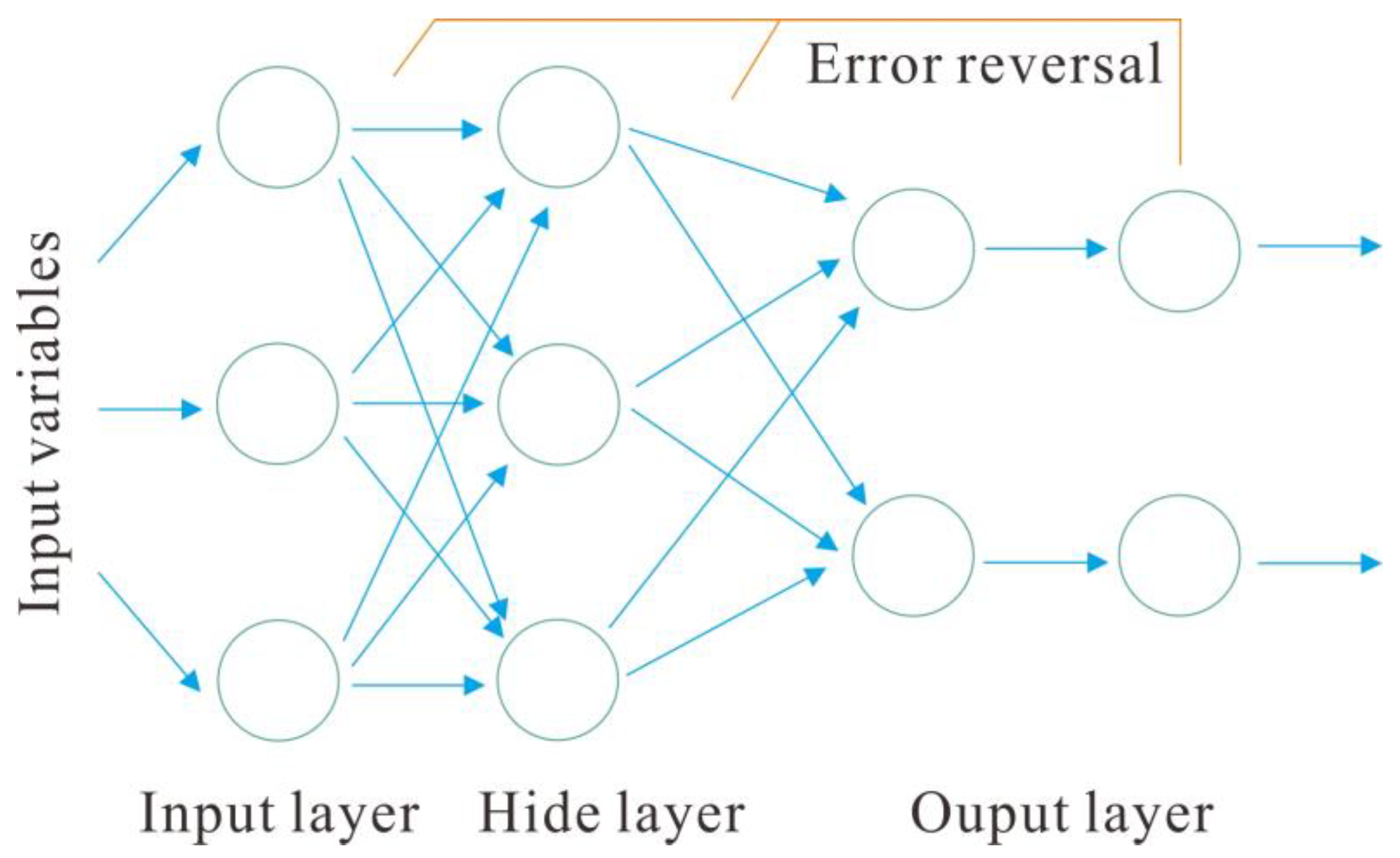

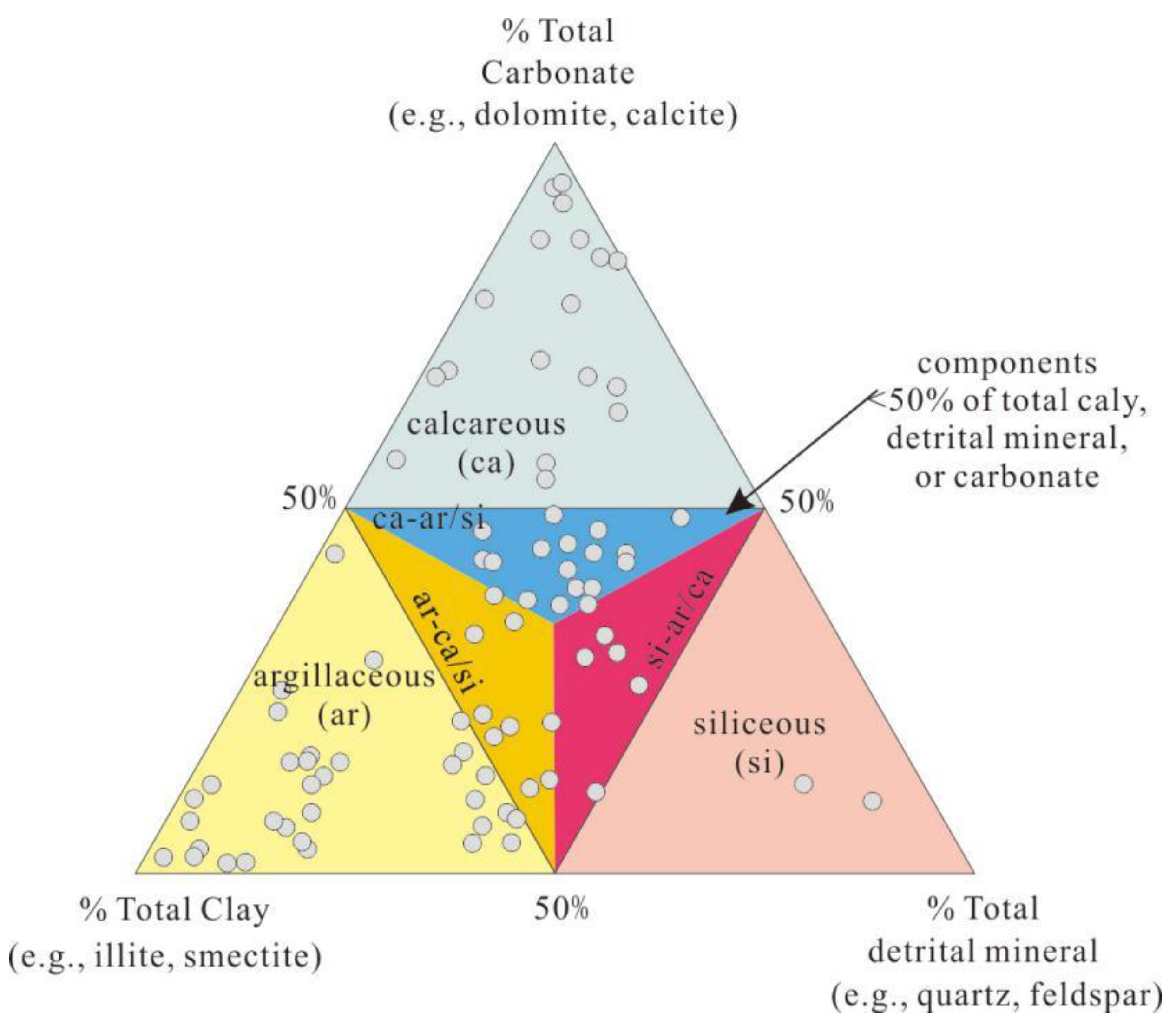

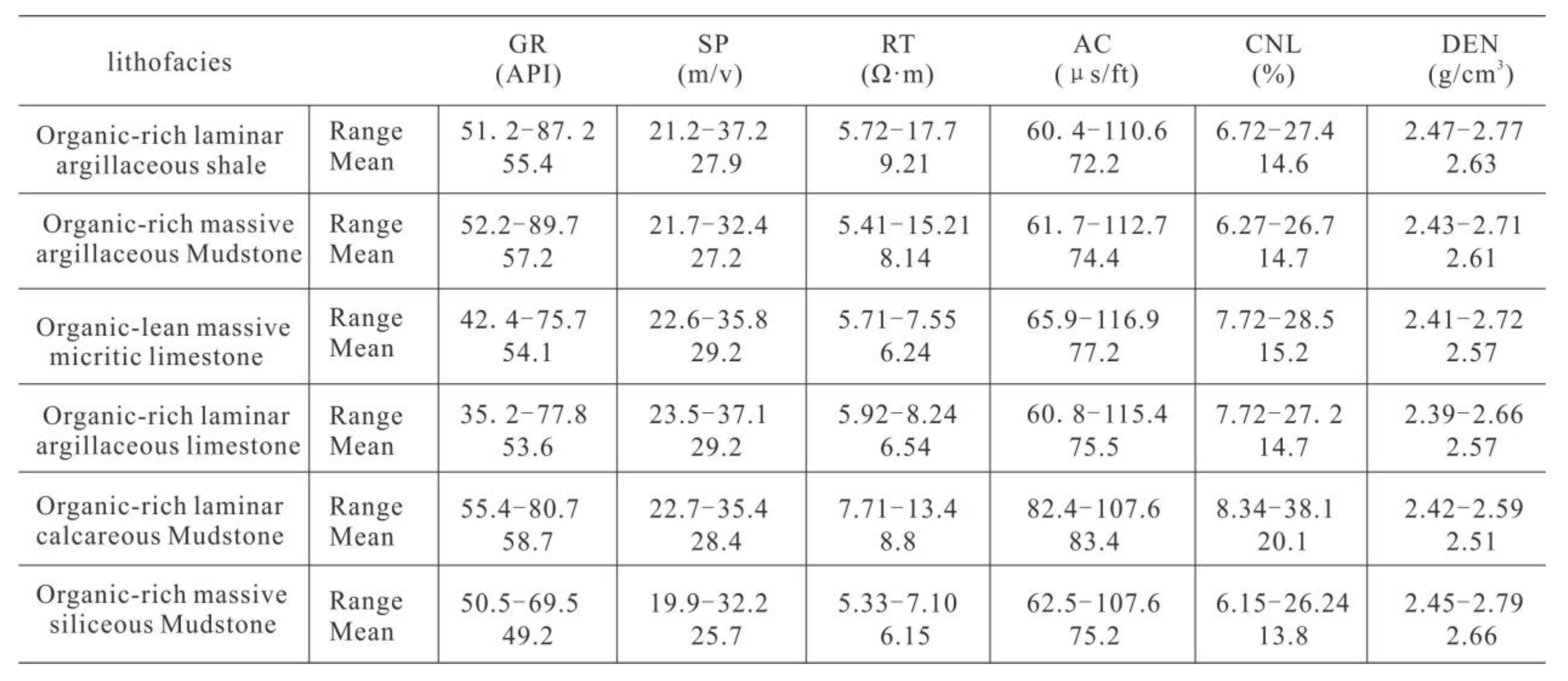

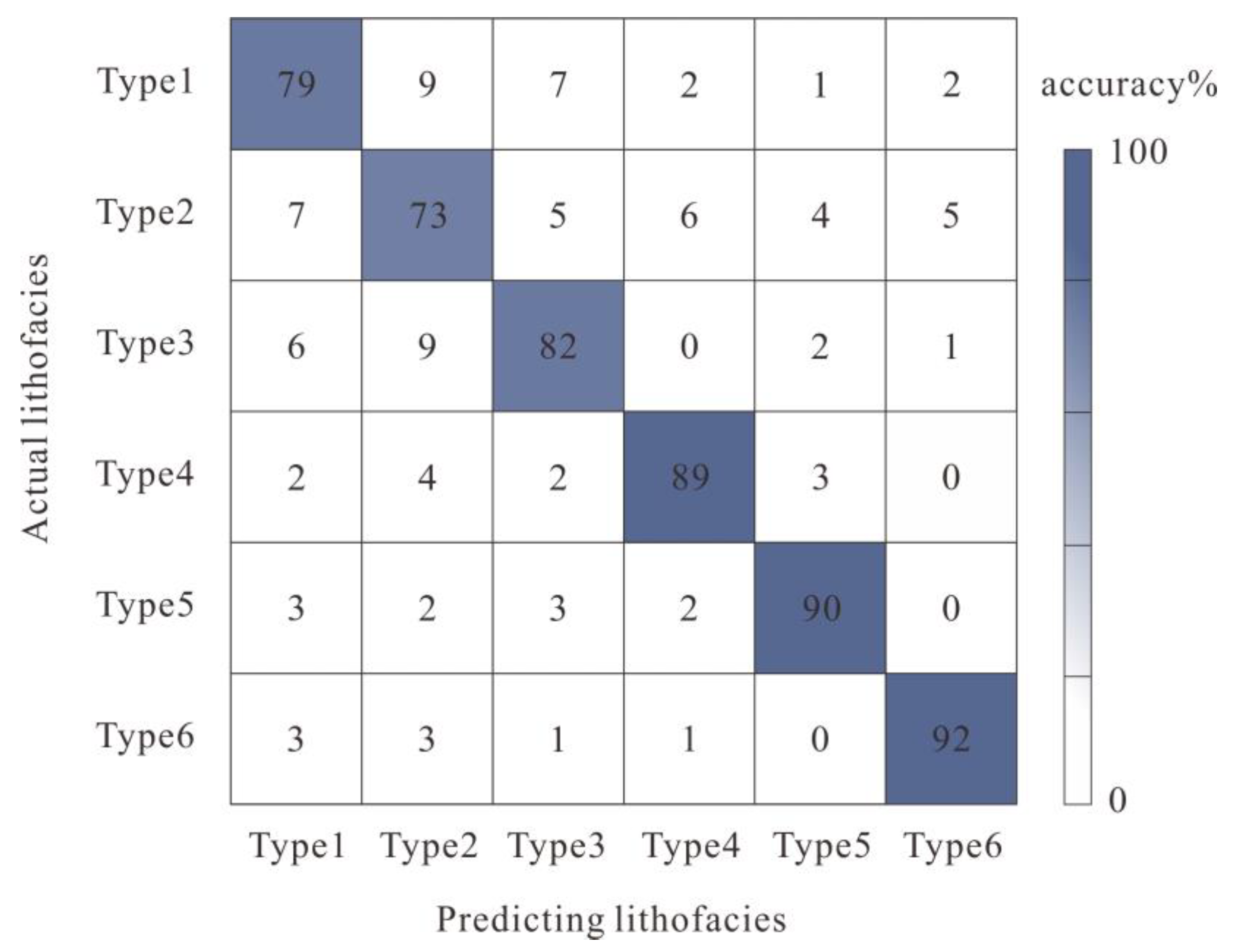


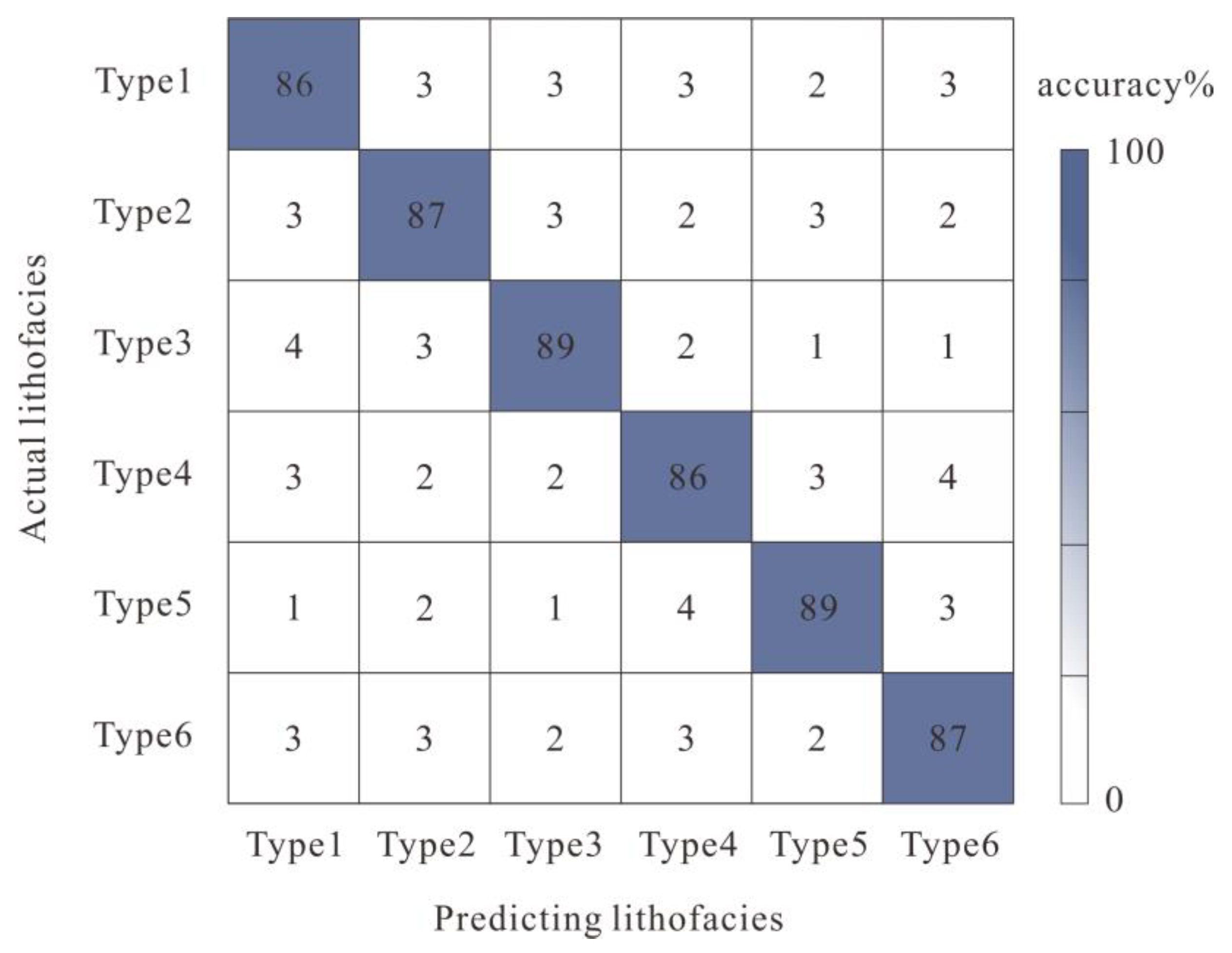
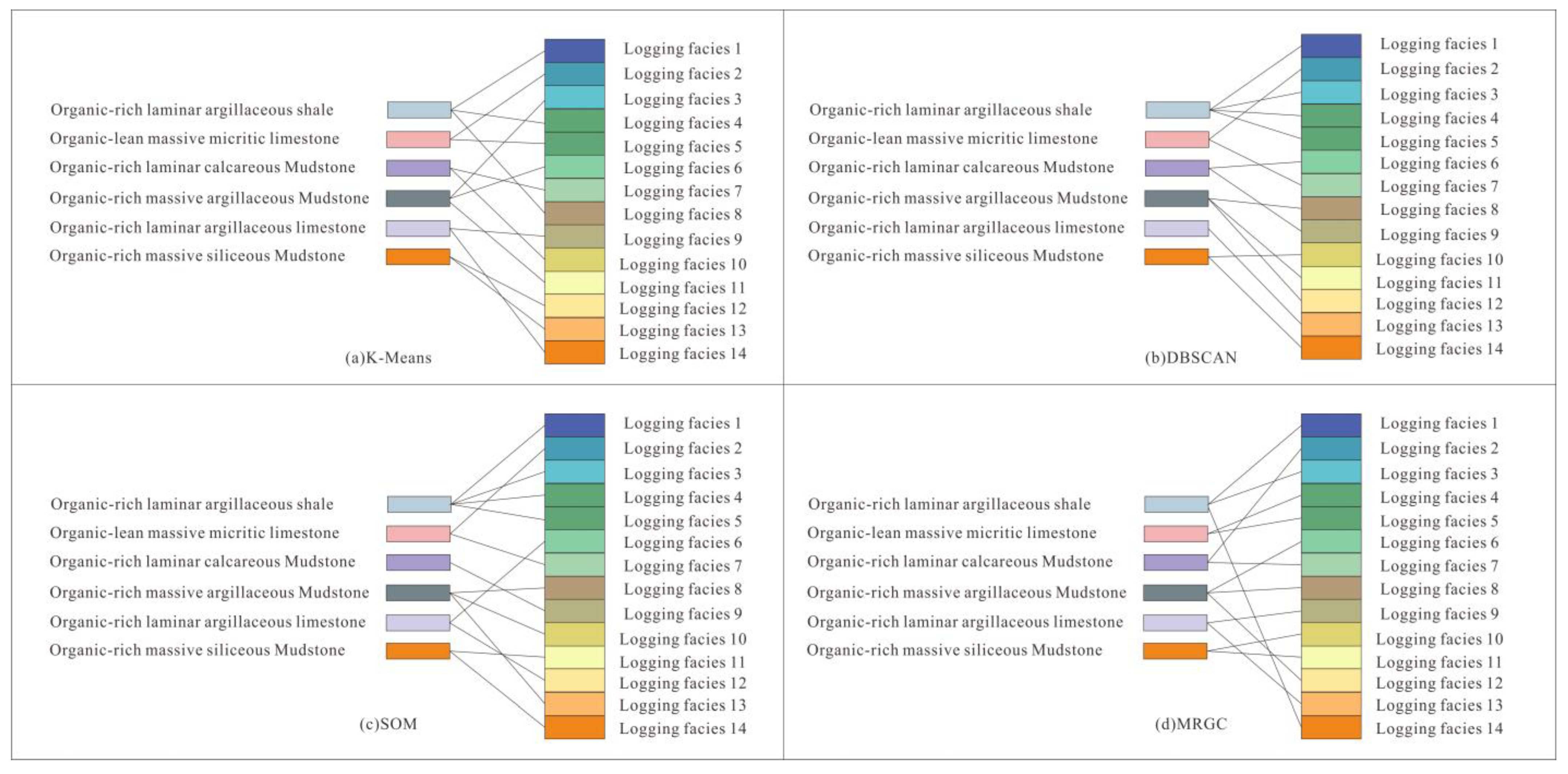
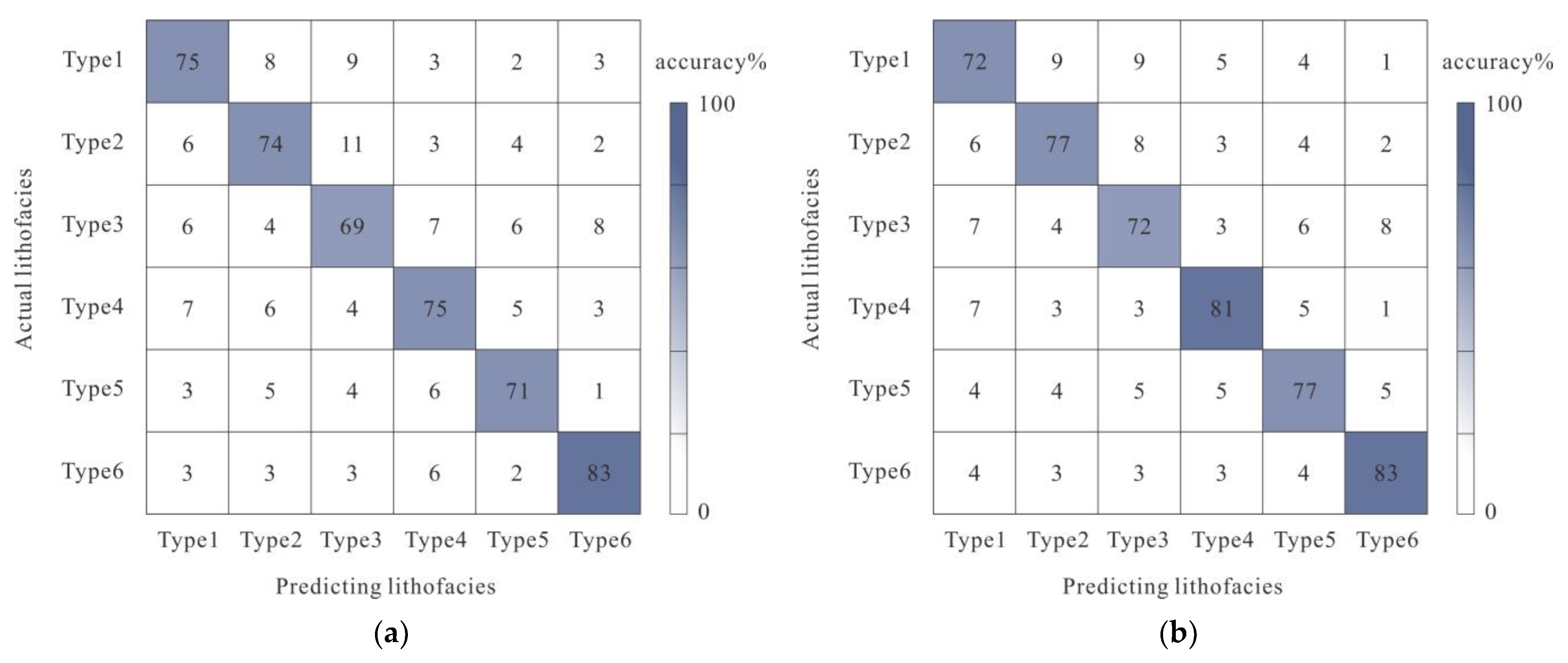
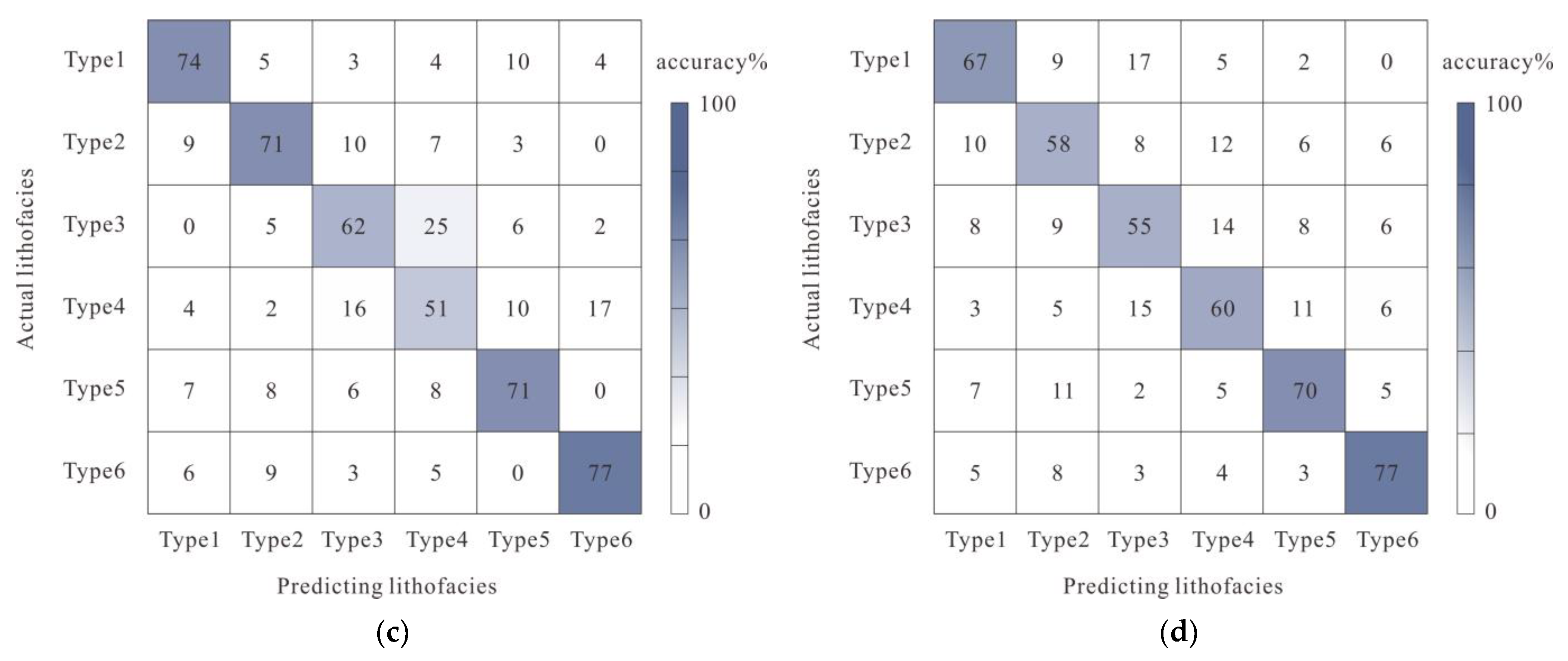
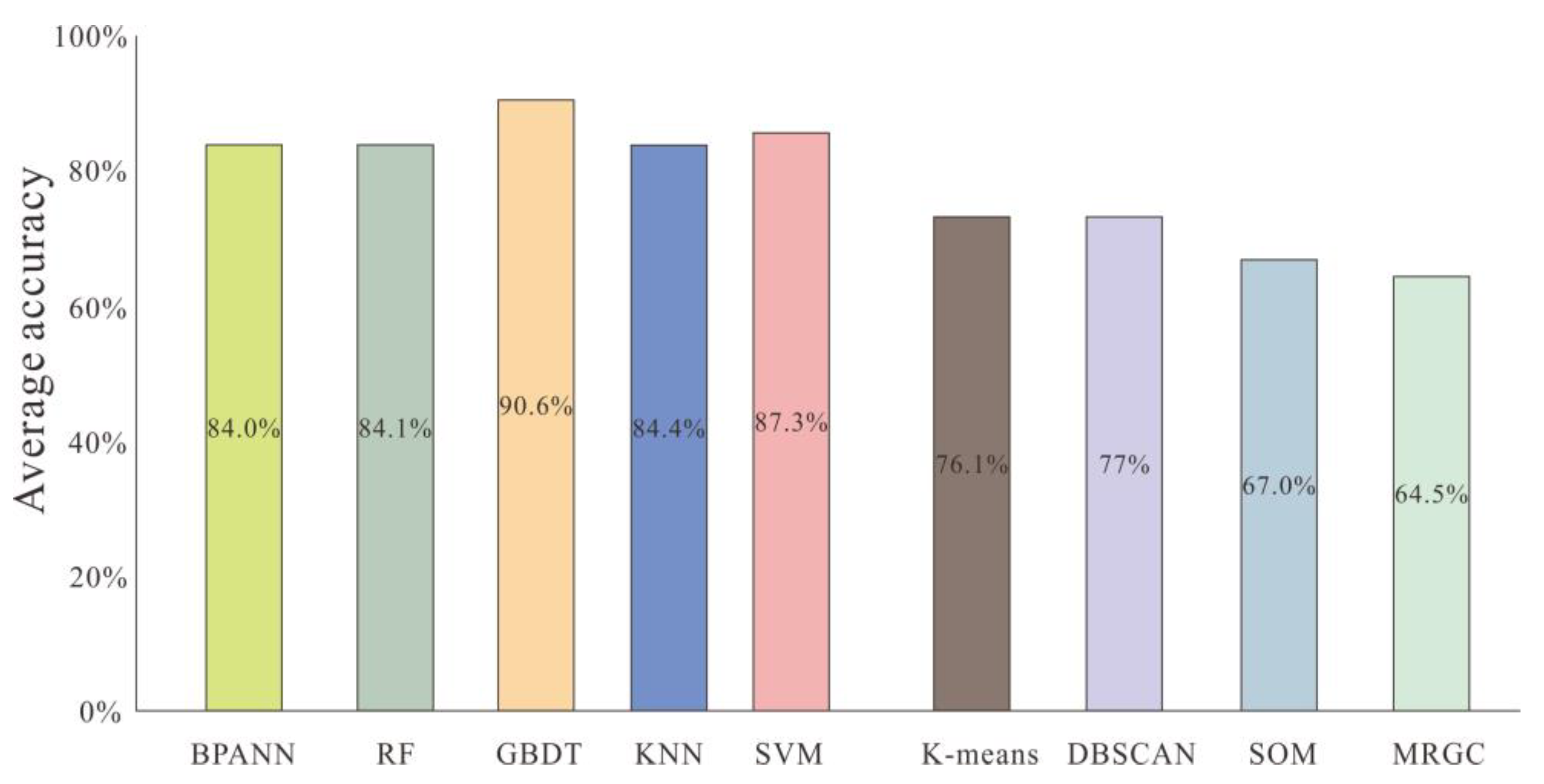
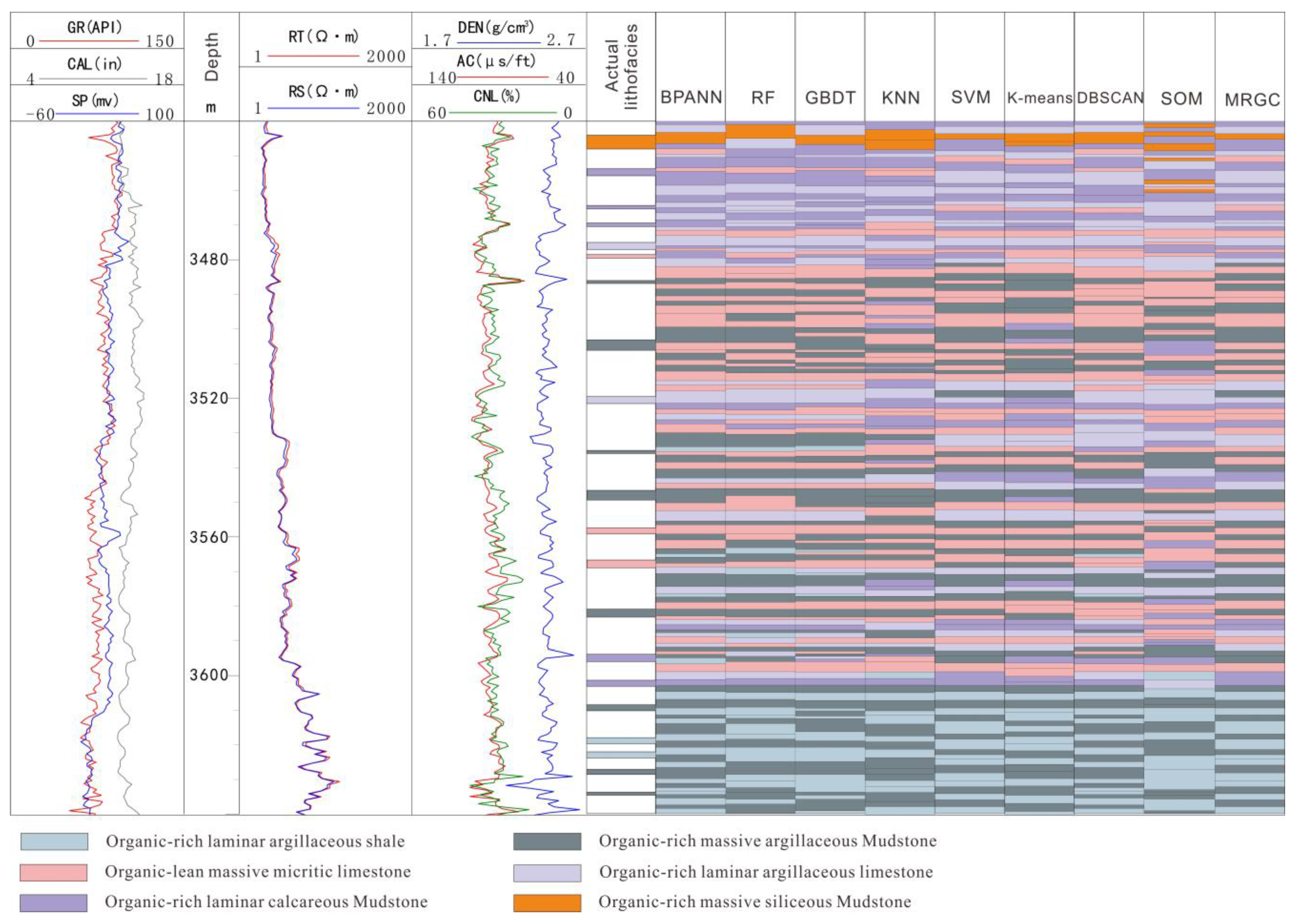
Disclaimer/Publisher’s Note: The statements, opinions and data contained in all publications are solely those of the individual author(s) and contributor(s) and not of MDPI and/or the editor(s). MDPI and/or the editor(s) disclaim responsibility for any injury to people or property resulting from any ideas, methods, instructions or products referred to in the content. |
© 2023 by the authors. Licensee MDPI, Basel, Switzerland. This article is an open access article distributed under the terms and conditions of the Creative Commons Attribution (CC BY) license (https://creativecommons.org/licenses/by/4.0/).
Share and Cite
Liu, R.; Zhang, L.; Wang, X.; Zhang, X.; Liu, X.; He, X.; Zhao, X.; Xiao, D.; Cao, Z. Application and Comparison of Machine Learning Methods for Mud Shale Petrographic Identification. Processes 2023, 11, 2042. https://doi.org/10.3390/pr11072042
Liu R, Zhang L, Wang X, Zhang X, Liu X, He X, Zhao X, Xiao D, Cao Z. Application and Comparison of Machine Learning Methods for Mud Shale Petrographic Identification. Processes. 2023; 11(7):2042. https://doi.org/10.3390/pr11072042
Chicago/Turabian StyleLiu, Ruhao, Lei Zhang, Xinrui Wang, Xuejuan Zhang, Xingzhou Liu, Xin He, Xiaoming Zhao, Dianshi Xiao, and Zheng Cao. 2023. "Application and Comparison of Machine Learning Methods for Mud Shale Petrographic Identification" Processes 11, no. 7: 2042. https://doi.org/10.3390/pr11072042
APA StyleLiu, R., Zhang, L., Wang, X., Zhang, X., Liu, X., He, X., Zhao, X., Xiao, D., & Cao, Z. (2023). Application and Comparison of Machine Learning Methods for Mud Shale Petrographic Identification. Processes, 11(7), 2042. https://doi.org/10.3390/pr11072042






